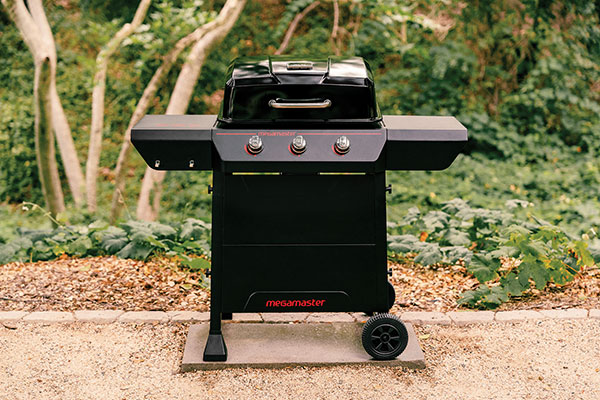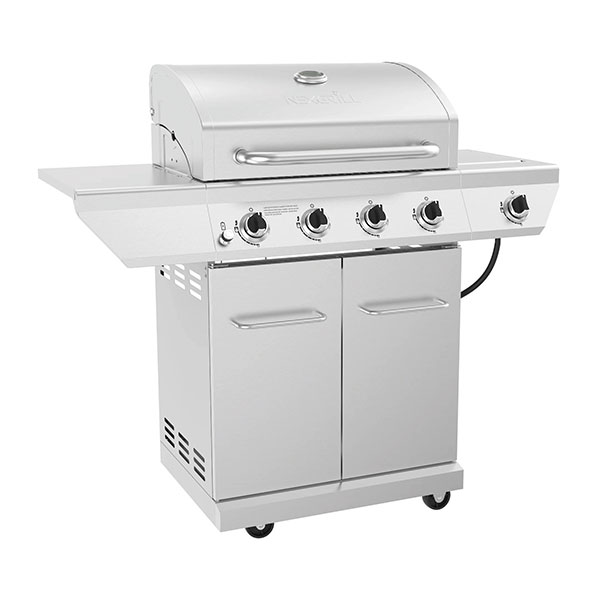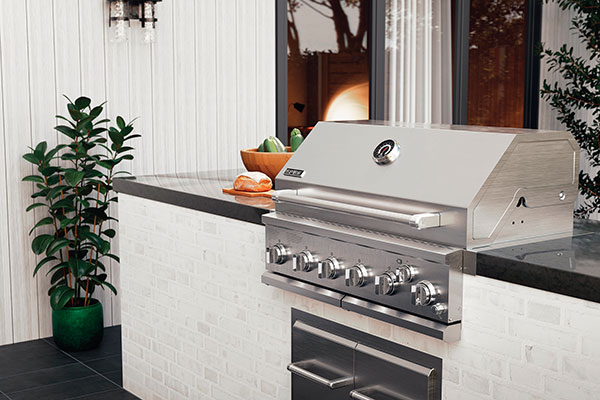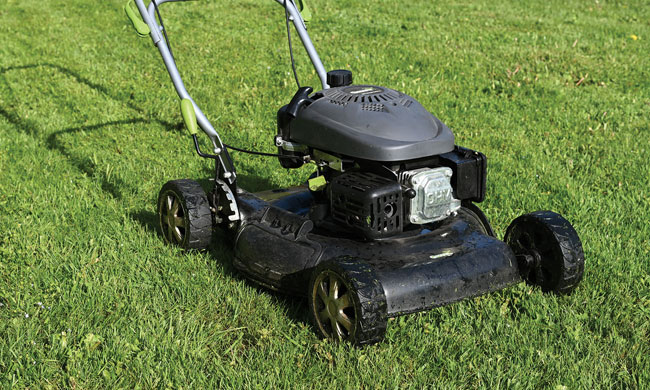Live Better
Protect yourself from Medicare scams

Learn how to spot and report Medicare fraud
(Family Features) Since 1965, Medicare has provided health care coverage to millions of Americans. More than 65 million people in the United States were enrolled in Medicare as of February 2023, with more people becoming eligible and enrolling each year. Anyone on Medicare is at risk of Medicare-related fraud, and the Medicare program continues to warn people to watch out for scammers who steal Medicare Numbers and other personal information to exploit beneficiaries’ benefits.
Broadly speaking, Medicare fraud occurs when someone makes false claims for health care services, procedures and equipment to obtain Medicare payments. Medicare fraud costs taxpayers billions of dollars and puts the health and welfare of beneficiaries at risk. The impact of these losses and risks is expanding as Medicare continues to serve a growing number of beneficiaries.
“Anyone on Medicare can be a target of Medicare fraud,” said Centers for Medicare & Medicaid Services (CMS) Administrator Chiquita Brooks-LaSure. “But there are steps you can take to protect yourself and your loved ones by using CMS’ fraud tips to recognize and report potential scammers. Let’s all work together to make sure you’re not a victim of Medicare fraud.”
How to Spot Medicare Scams There are many types of Medicare scams, taking the form of unsolicited emails, phone calls, text messages, social media posts and phony websites. Scammers often claim to be from the Medicare office, an insurance company or a government office. They’ll ask for your personal and financial information, such as your Medicare or Social Security Number, so that they can submit false claims for payment.
There are many types of Medicare scams, taking the form of unsolicited emails, phone calls, text messages, social media posts and phony websites. Scammers often claim to be from the Medicare office, an insurance company or a government office. They’ll ask for your personal and financial information, such as your Medicare or Social Security Number, so that they can submit false claims for payment.
Remember that Medicare will never call, text, email or contact you through social media asking for your Medicare Number.
Some common Medicare scams to watch out for include:
- Offers of “free” genetic testing
- Calls or emails about free medical equipment, such as a knee brace, walker or cane
- Solicitations for other services, such as offers of “paid” clinical research trials
While this is not a comprehensive list, these examples give you an idea of how to spot potential Medicare fraud. Scammers will do their best to present these services and products as genuine in exchange for your Medicare Number.
How to Protect Yourself
Now that you know how to spot Medicare fraud, you’ll need to know how to protect yourself from potential fraudsters. Remember to:
- Guard your Medicare Number just like your Social Security card and credit card
- Share your Medicare Number only with trusted health care providers
- Review your Medicare statements, watch for services billed that look suspicious and ask questions if something looks wrong
How to Report Scammers
Reporting Medicare fraud protects you and millions of other people with Medicare and those with disabilities. If you or someone you know have experienced Medicare fraud or suspect an offer you’ve received is a scam, report it as soon as possible. You will never be in trouble for reporting fraud.
To learn more about Medicare fraud, visit Medicare.gov/fraud. To report potential Medicare fraud, you can call 1-800-MEDICARE (1-800-633-4227) or report the scam to the Federal Trade Commission at ReportFraud.ftc.gov.
Information provided by the U.S. Department of Health and Human Services.
Photos courtesy of Getty Images
Live Better
Get ready to grill: Choosing the right outdoor cooking solution

(Family Features) Warmer temperatures and sun-filled days mean it’s time to take entertaining and socializing outdoors, and a key component of many outdoor gatherings is fresh-grilled food.
Because firing up the grill can make prepping meals quick and easy, it allows you to spend more time with friends and family rather than missing out on the sunshine while stuck in the kitchen. Whether you’re a first-time griller or consider yourself a master of the grates, there’s a grill available to meet your skill level and needs, such as these options that provide flexibility for small-to-midsize backyard spaces – as well as a large built-in model for custom outdoor kitchens – and a variety of features and function to make the most of your warm weather gatherings.

Portable, Small-Space Cooking
Ideal for first-time grillers, couples, small families or those with limited backyard spaces, the Megamaster 3-Burner Gas Grillwas designed to fuse performance and value. Despite its size, it can cater to almost any grilling or entertaining need with three stainless steel burners and 447 square inches of cooking space, a combination of versatility and capacity to prepare large quantities of food as well as various types of food simultaneously. Plus, it’s easy to maneuver on two heavy-duty wheels, making it simple to free up patio space after use. Learn more at megamaster.com.

Family-Sized Functionality
With ample cooking space to feed small and medium-sized groups, the Nexgrill 4-Burner Gas Grill with Side Burner is a perfect all-around grill for both beginners and seasoned grilling enthusiasts. Always ready to fire up some flavor, the durable grill also features a stainless steel side burner to saute, simmer and warm dishes simultaneously as well as 628 square inches of cooking space, meaning family favorites like burgers, dogs, chicken and more can be put on the table quickly. Find more information at nexgrill.com.

Elevate Your Outdoor Kitchen
If your outdoor living area includes enough space, you can elevate the outdoor cooking experience with an outdoor kitchen. Put a premium, built-in grill like the Spire 6-Burner Built-In Grill at the center of your custom, luxurious entertaining space. This dual-fuel, stainless steel gas grill features 904 square inches of cooking space and 73,000 British thermal units of cooking power across six main burners and an intense-heat ceramic rear burner, producing restaurant-quality sear marks and exceptional heat retention. Visit spireoutdoor.com to learn more about the durable, high-performance grilling solution.
SOURCE:
Megamaster
Nexgrill
Spire
Live Better
Tips to make your AC more energy efficient, sustainable

(Family Features) Updating your HVAC (heating, ventilation and air conditioning) system to cool your home in a smart and sustainable way involves several steps that not only improve energy efficiency but also reduce environmental impact.
Consider these tips from the heating and cooling experts at Carrier to help make your cooling system more eco-friendly:
- Upgrade to an Energy-Efficient HVAC System. If your HVAC system is outdated, consider replacing it with a more energy-efficient model. Look for systems with an Energy Star or high SEER2 (seasonal energy efficiency ratio) rating, which indicates better energy efficiency. The higher the SEER2 rating, the more efficient the unit. Financial incentives for installing a higher-efficiency system are available through the Inflation Reduction Act of 2022. You can also shop for rebates from manufacturers and utility companies.
- Look for a Carbon-Free HVAC System. Heat pumps, ductless and VRF (variable refrigerant flow) systems that run on electricity and use low global-warming potential refrigerant, like Carrier’s Puron Advance, can help reduce your home’s negative impact on the environment.
- Install a Smart Thermostat. A smart thermostat can be programmed based on your preferences and adjust temperatures automatically. These devices can be controlled remotely through smartphones and help reduce energy consumption by cooling your home only when necessary.
- Conduct Regular Maintenance. Keep your HVAC system running efficiently with regular maintenance. This includes cleaning or replacing air filters every 1-3 months, checking refrigerant levels, cleaning outside condenser coils and ensuring the system’s components are in good, working condition and the airflow is not blocked.
- Seal and Insulate. Improve your home’s insulation to maintain a consistent temperature. Seal windows, doors and any gaps or cracks to prevent cool air from escaping. This can significantly reduce the workload on your HVAC system.
- Use Ceiling Fans. Ceiling fans can help circulate cool air throughout your home, allowing you to set the thermostat at a higher temperature without sacrificing comfort, thus saving energy.
- Add Window Treatments. Use blinds, shades or curtains to block out sunlight and reduce heat gain during the hottest parts of the day. This simple step can make a big difference in how much your air conditioner needs to work.
- Upgrade to a Variable-Speed Compressor. Traditional compressors operate at full power or not at all. However, a variable-speed compressor can adjust its output to match your cooling needs precisely, resulting in better efficiency, energy savings and improved indoor comfort.
- Ventilate Properly. Ensure proper ventilation in your home, especially in areas like the kitchen and bathroom, to remove excess heat and humidity, which can reduce the need for air conditioning.
- Update Roofing. If you’re replacing your roof, consider cool roofing materials that reflect more sunlight and absorb less heat than standard roofing materials, reducing the heat that enters your home.
By implementing these strategies, you can improve or update your HVAC system to cool your home more sustainably. Not only do these steps help the environment, they can also lead to lower energy bills and improved indoor comfort. Always consult with an HVAC professional to determine the best and most efficient options for your home and needs.
Find more information and tips to sustainably cool your home at Carrier.com.
SOURCE:
Carrier
Live Better
Steps to get your yard ready for spring

(Family Features) As the weather begins to warm and days get longer, it’s important to begin preparing your yard for a healthy growing season. While factors like climate, soil type and grass type can all impact how your yard grows, there are a few steps you can take during the spring months to help your lawn thrive.
From dethatching and aerating to fertilizing and mowing, tackling these simple chores can help ensure your yard looks its best and is prepared to fight off seasonal weeds, disease and drought.
Tune Your Mower
Before it’s time for the first mowing of the season, inspect your mower and perform any routine maintenance necessary. That goes beyond sharpening, or replacing, the blade, and includes changing the oil, spark plugs and filter as well as filling with a fresh tank of gas.
Loosen the Thatch Layer
While it’s important to avoid working on your lawn until after the final freeze to avoid damaging the grass, raking your yard with a spring tine rake to loosen thatch – the layer of leaves, roots and dead grass that builds up between live grass and soil – before the first mow is equally important. Be sure to rake when the soil is dry; if it’s too soft or muddy, you may pull up healthy grass crowns.
Combat Compacted Soil
If your soil has become compacted – likely the effect of heavy foot traffic – and is too dense for water, air and other nutrients to reach the roots of your grass, aerating can help break it up and reduce thatch. A core, or plug, aerator can introduce tiny holes into your soil by removing plugs of grass and soil, which lets nutrients more easily reach the roots. An added bonus, the plugs can decompose on top of your grass, supplying more nutrients.
Fill in Bare Spots
If your lawn is looking sparse, overseeding, which involves spreading grass seed over your existing lawn, can help fill in bare spots. Be sure to choose the right type of seed for your climate and soil type to ensure proper growth. Applying a slow-release nitrogen fertilizer at the same time can provide additional nutrients that are important for promoting healthy growth.
Start Seasonal Mowing
When the ground is dry enough and your grass is long enough to require cutting, begin seasonal mowing. Be sure to use proper techniques, including varying your mowing direction each time to avoid creating patterns or ruts, and avoid cutting grass too low, which can make the lawn more susceptible to weeds and drought stress. In general, never remove more than one-third of the grass blade at a time.
Find more tips to help get your yard ready for warm weather at eLivingtoday.com.
Photo courtesy of Unsplash
SOURCE:
eLivingtoday.com
-

 NEWS1 year ago
NEWS1 year ago2 hurt, 1 jailed after shooting incident north of Nocona
-

 NEWS6 months ago
NEWS6 months agoSuspect indicted, jailed in Tia Hutson murder
-

 NEWS1 year ago
NEWS1 year agoSO investigating possible murder/suicide
-

 NEWS1 year ago
NEWS1 year agoWreck takes the life of BHS teen, 16
-

 NEWS9 months ago
NEWS9 months agoMurder unsolved – 1 year later Tia Hutson’s family angry, frustrated with no arrest
-

 NEWS12 months ago
NEWS12 months agoSheriff’s office called out to infant’s death
-

 NEWS1 year ago
NEWS1 year agoBowie Police face three-hour standoff after possible domestic fight
-

 NEWS1 year ago
NEWS1 year agoDriver stopped by a man running into the street, robbed at knifepoint





